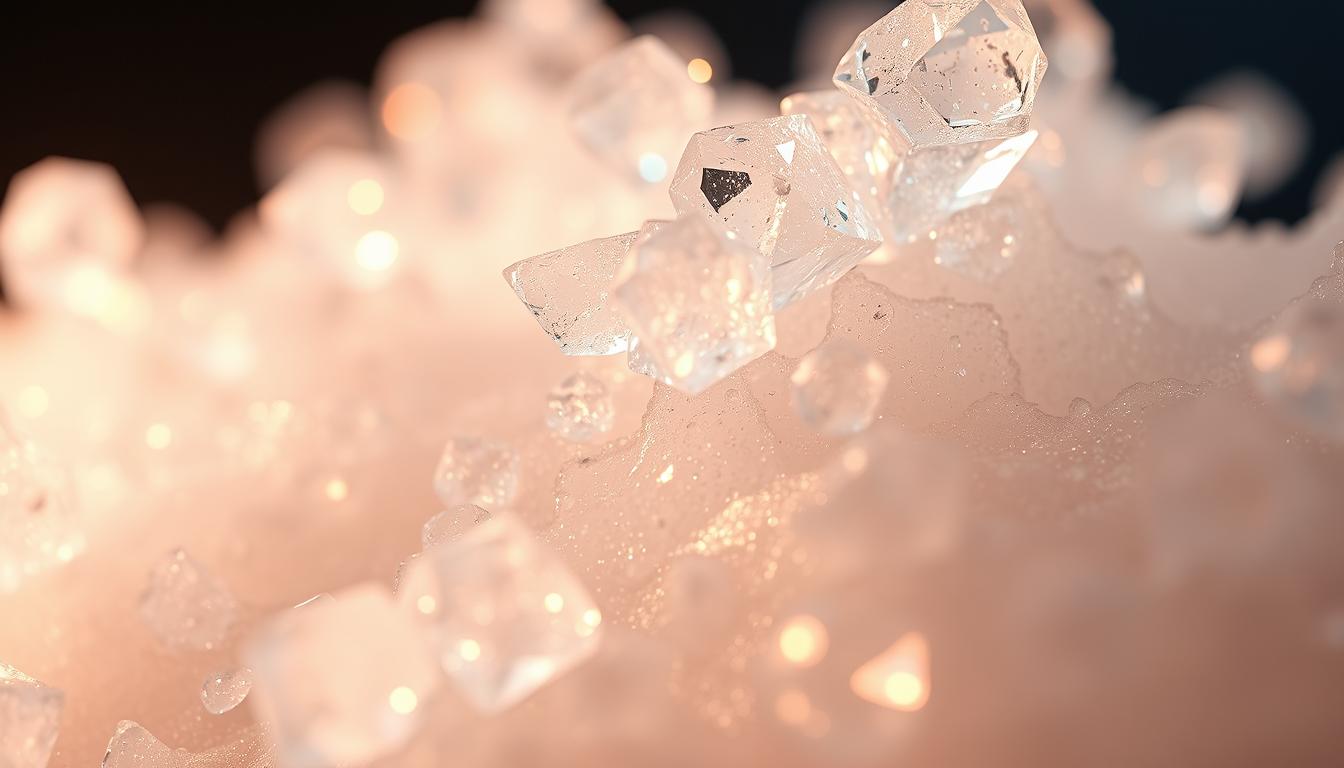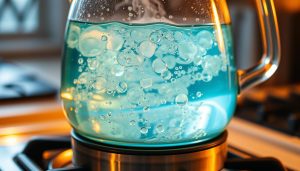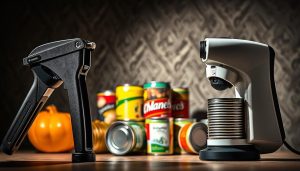Did you know 95% of candy textures depend on controlling sugar crystallization? When you bite into smooth fudge or snap a hard lollipop, you’re experiencing molecular patterns forged through precise temperature control. This sweet alchemy transforms ordinary sucrose into edible art through chemistry principles anyone can understand.
Boiling sugar syrup behaves differently based on cooling methods. Rapid cooling creates disordered structures in treats like caramel, while gradual temperature drops let sucrose molecules align into geometric crystals. These microscopic arrangements determine whether your candy melts on the tongue or crunches between teeth.
Each sugar crystal forms when C12H22O11 molecules lock into repeating 3D patterns. Confectioners manipulate this process using techniques like:
- Stirring frequency adjustments
- Precision thermometer readings
- Additives that disrupt molecular bonds
Mastering these methods separates gritty rock candy from velvety fondant. The same sucrose solution becomes completely different treats based on crystal size and distribution. Professional candy makers use this science daily, proving kitchen creativity thrives on chemical knowledge.
Key Takeaways
- Candy textures depend on controlled sugar crystallization processes
- Crystalline vs non-crystalline treats differ in molecular arrangement
- Sucrose molecules form geometric patterns when cooled properly
- Temperature control determines crystal size and texture
- Additives and techniques influence molecular bonding
- Confectionery artistry combines culinary skill with chemistry
Understanding the Fundamentals of Candy Crystallization
Creating perfect candy textures starts with three core elements: sugar, water, and heat. These components interact like orchestra musicians – each playing a distinct role in crystallization. Let’s examine how their relationships shape confections from glossy caramels to crunchy brittles.

The Dance of Molecules
When you mix sucrose with water, polar H2O molecules attack sugar crystals in two phases. First, they cling to sucrose like magnets. Then, they pull dissolved sugar into the solution. This molecular tug-of-war continues until equilibrium occurs – equal numbers entering and leaving crystals.
| Water Temp (°F) | Sugar Dissolved (cups) | Solution Type |
|---|---|---|
| 68 | 2 | Saturated |
| 212 | 5 | Supersaturated |
| 250 | 8 | Hard Crack Stage |
Breaking Solubility Limits
Heating water lets you dissolve extra sucrose. At 212°F, one cup holds five cups sugar – far beyond the 1:2 room-temperature ratio. As candy maker Julia Child once noted:
“Controlling supersaturation separates amateurs from professionals.”
Cooling this unstable solution creates opportunities for controlled crystal growth.
Triggers and Stability
Nucleation sites – like dust or utensil scratches – disrupt delicate balances. They provide anchors where sugar molecules cluster, initiating crystallization. Without careful temperature management, these spots cause gritty textures. Professionals use this knowledge to either encourage smooth fondant or prevent rock candy formation in fudge.
The Science of Crystal Formation in Candy: Techniques and Chemistry
What determines whether your caramel stays creamy or turns grainy? The answer lies in invisible forces guiding sucrose’s dance. Two chemical concepts shape every sweet treat’s mouthfeel: molecular attractions and equilibrium responses.

Intermolecular Forces and Sugar Molecules
Sucrose crystals form through hydrogen bonds – weak attractions between molecules. These forces create a rigid 3D lattice as molecules stack like building blocks. When you dissolve granulated sugar, water disrupts these bonds by offering better attachment points.
Confectioners exploit this competition. Adding corn syrup introduces rival molecules that block sucrose’s natural bonding patterns. This interference prevents large crystals from forming, creating smoother textures in chewy caramels.
Le Châtelier’s Principle in Action
Heat your syrup to 250°F, and you’ll witness thermodynamics at work. As chemist Dr. Alicia Torres explains:
“Candy making is applied Le Châtelier – every temperature shift triggers predictable molecular responses.”
Cooling supersaturated solutions forces excess dissolved sugar to crystallize. Rapid cooling shocks the system, producing numerous small crystals. Gradual cooling allows orderly growth – perfect for rock candy’s signature crunch.
Professional chocolatiers manipulate these reactions daily. They know that stirring speed affects crystal size, while precise temperature control determines whether fudge sets smoothly or turns gritty. Your kitchen becomes a lab where chemistry dictates delicious outcomes.
Practical Approaches to Candy Making and Crystal Control
Your candy’s texture hinges on deliberate choices during preparation. Whether crafting velvety fudge or transparent lollipops, ingredient selection and technique determine if crystals form – and how they behave.
Choosing Ingredients: Sugar Types and Alternatives
Granulated sugar forms the foundation, but additives shape outcomes. Corn syrup plays a critical role – its glucose molecules block sucrose from forming large crystals. Professional recipes for chewy candies often use 1:1 sugar-to-corn-syrup ratios.
Fats like butter create physical barriers between molecules. This interference produces smooth caramels instead of grainy textures. Acids like lemon juice chemically transform sucrose into invert sugar, naturally preventing crystallization.
Methods to Prevent or Encourage Crystallization
Timing separates success from failure. Stirring boiling syrup introduces unwanted crystals, while vigorous mixing after cooling creates the tiny crystals fudge requires. For rock candy, patience proves essential – undisturbed solutions over days grow signature large crystals on strings.
| Temperature Stage | Range (°F) | Candy Type |
|---|---|---|
| Thread | 230-234 | Syrups |
| Soft Ball | 234-241 | Fudge |
| Hard Crack | 295-309 | Lollipops |
Controlled cooling methods yield distinct results. Rapid chilling creates glass-like textures in candies by preventing crystal formation. Gradual temperature drops allow organized structures in crystalline sweets. Your thermometer becomes the ultimate guide – each degree shift alters molecular behavior.
Conclusion
Crafting confections reveals hidden chemistry at your fingertips. Through precise control of sugar crystals, you transform basic syrup into textures ranging from glass-like brittles to creamy caramels. Centuries of trial-and-error techniques now make sense through molecular science – sucrose solutions behave predictably when you master temperature and timing.
Your syrup’s cooling rate directly impacts crystal size. Rapid chilling creates smooth textures by limiting growth, while patience yields rock candy’s signature crunch. Even invisible factors matter: stirring introduces nucleation points, and additives like corn syrup disrupt molecular bonding patterns.
This knowledge turns failures into learning opportunities. Grainy fudge? Excess crystals formed during cooling. Cloudy lollipops? Impurities triggered early crystallization. Each batch proves how water content and heat management dictate outcomes.
Ultimately, candy-making bridges art and chemistry. You command sucrose’s transformation using principles governing molecular patterns. Whether creating holiday treats or experimenting with textures, remember: every sweet bite reflects controlled science simmering beneath the surface.



